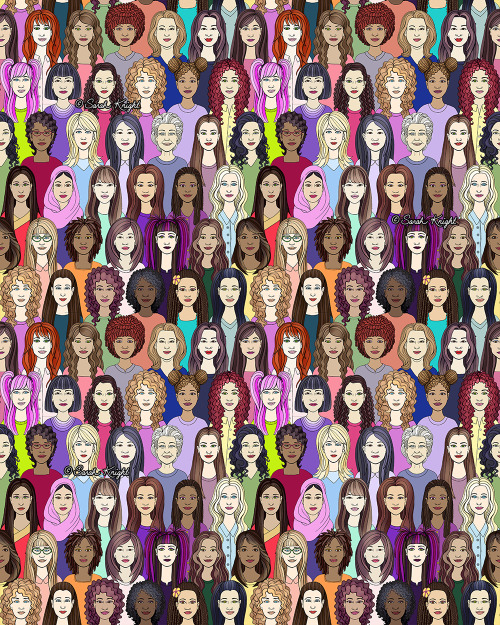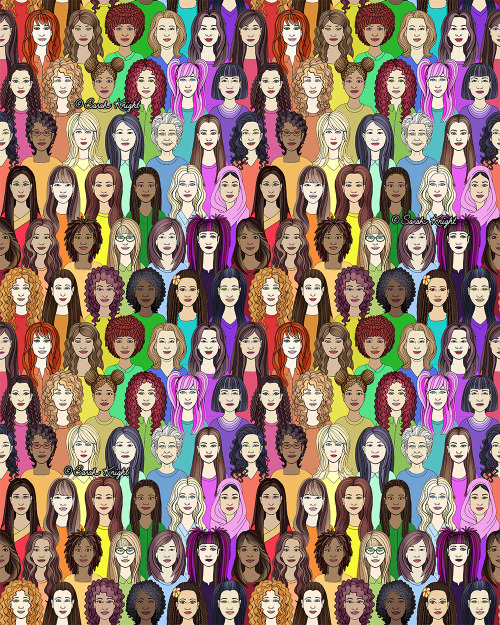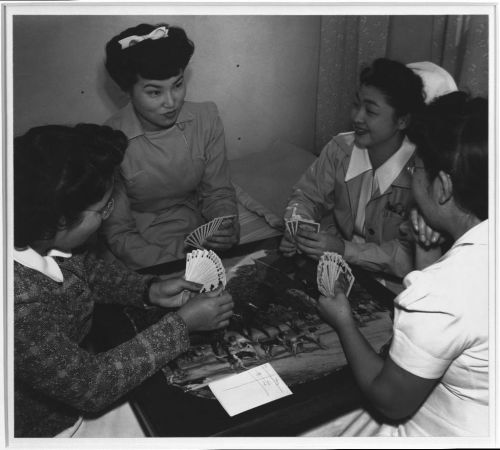#ethnicity
“What are you?” They genuinely ask
Time and time again and yet never ceasing to alarm me
My soul becomes invisible before them,
Skin too dark-too light, too yellow- too red-
Their gazes are chains that rip through my mysterious skin
Imprison me in assumptions
They lash at my skin and tear me away
Until I am nothing but whispers in the wind where I once walked
But I do not live to feed another’s curiosity
What am I?
I am the years of life lived
The steps taken by those who lived before me
I am the song they sing
But more than that I am human
Same as you
I do not wear myself like a name tag
If you must know-
If your questions are on the brink of exploding
Simply ask
“Who are you?”
❤️
Strangers
Right in the middle of my life I awoke in a strange wood.
Now confronting the strange is an experience retold across cultures; travelogues and journeys of adventure are not limited to the West, or to modern times. The roles are often the same, but the faces different, depending on a culture or period. But this type of story has found a special place in the hearts and minds of white men during the preceding ages.
It is difficult to separate the influence of stories told and held dear in the real lives of conquistadors and presidents, from the influence of grander, socially-constructed, historical narratives and assumptions about the world. Certainly they inform each other. What is more, this process of mutual inspiration between the literary and lived narratives of history has no discernible beginning.
It has no boundary between cultures, it has no boundary between the ages, but inquiring about the fruits of Western Civilization requires us to sort back through this same network of branches, stems, and roots. Truly, it is a strange wood.
There are really only two characters in these stories, the Self, and mirrors of that self, and the Other, and mirrors of the other. If they realize their sameness, then the story has ended in heaven. If they find themselves in hell, then that particular story begins again.
A Category of Difference, Conflict
Usually there is a projected confrontation between what we consider like ourselves, and an entity that is what we consider different, not like us; the Other. What really varies is the resolution of this confrontation, whether or not the two parties are joined, and whether or not someone changes in the process.
It is interesting how the Self and Other will change costumes, through ages and authors. But for the Amer-Euro world in recent millennia the Self has overwhelmingly been presented as white and male (frequently also dawning the tropes of poverty, or a soldierly career), and the Other is defined by a different ethnicity and skin tone, often female (but only by sex – these are not like the ‘familiar’ kind).
Monstrosity and Civilization
Beyond this point the Other (as with the resolution) will be informed by an author’s particular purpose, pride and/or ignorance. The Other will be given any number of additional traits marking her as different in ideology & religion, or in physical appearance; bestial and animalistic traits denoting something uncivilized and dehumanized in commensurate measure to an author’s own feelings of having been nurtured by those institutions. So that this animalistic quality can be seen as monstrous in its opposition to Civilization, or as spiritually more pure in being closer to nature (depending on a creators reverence for either one).
Wedding and a Funeral (A Dowry or Inheritance)
White guy ends up in a strange place, women end up falling in love with him and wanting to make him ruler of the land, in the least he becomes a transformative leader.
With this short summary I could be describing an amazing array of narratives, tied to any number of historic moments (sometimes retrospectives) and moods. From contemporary films like (Avatar, Oz the Great and Powerful, Dances with Wolves, Lawrence of Arabia, and there are galaxy of others) to popular and respected works of literary cannons (from Heart of DarknesstoDune), nearly every platform has been used to manifest this social peculiarity. Many of these are more optimistic than seemingly dangerous, but by their utilization of these tropes they are no less indicted of White Male Syndrome.
Articles reviewed below suggest how popular reproductions of what is considered ‘Other’—whether by race, gender, or any other measure – have been historically tied to cumulative phases and needs of the economy, or surrounding specific wars, or yet vaguer zeitgeists.
From the genres of medieval romance, and the accumulated folk tales they represent, previous posts demonstrated the antiquity of this phenomenon. The Sergas de Esplandian was alive in the minds of Spanish Explorers, just as earlier stories had similarly chronicled the expanding world-view of Westerners from at least the days of Alexander the Great.
Rapists, Tramps, and Thieves
And if the story is of a different kind of stranger ending up in a White land, then the literature suggests that the ending will be considerably grimmer (especially if he goes near the women – see here,here, and here).
Calafia from the Sergas:
“very large in person, the most beautiful of all of them, of blooming years, and in her thoughts desirous of achieving great things, strong of limb and of great courage.
And Candace from the Alexander Romances:
"the whole of her country as ruled by a woman of remarkable beauty, in her early middle age (…) She was above normal human size and almost godlike in appearance."139
Bridge game: Nurse Aiko Hamaguchi, Nurse Chiye Yamanaki, Miss Catherine Yamaguchi, Miss Kazoko Nagahama at Manzanar Relocation Center, California, one of ten camps where over 110,000 Japanese-Americans were incarcerated during WWII. 1943.
Photo by Ansel Adams
more pictures of hyper-Americanized, hyper-feminized Japanese women taken and circulated during the internment.
Post link
Kevin Starr describes the debate over allowing California into the Union, as it hung on the issue of slavery, or the South’s “peculiar institution” (p73). This is a belittling way to describe slavery, as if it were peculiar to the South, or particular to the antebellum period. It is representative of a certain misconception that many continue to perpetuate, as described on the website for the modern non-profit anti-slavery group, TraffickFree.org:
“ there are more slaves now than ever before in human history - approximately 27 million around the world
(….)
“17,500 slaves are brought into the United States every year “
So in the least it is a poor choice of words on Starr’s part, but also seems to contradict information he admits to later in the chapter, albeit in a mitigated vocabulary:
“immigrants who arrived at Sutter’s Fort (…) contracted from him the labor (and sometimes it has been alleged, the sexual services) of Native Americans indentured to Sutter or otherwise under his control, many of them little better off than slaves.” [pp77-78]
I must wonder what he qualifies in their situation as being ‘not quite as bad as’ slavery-slavery.
Like the seats of a teeter-totter, the surge of outsiders into California during the Gold Rush brought with it a commensurate decline in the lives and cultures of Native Americans. In many ways this pattern copies the earlier interaction of Spanish colonials and Native’s in the first days of settlement and the introduction of the mission-system. For this reason, when Starr waxes poetically about the Gold Rush “…reprising the dreams of the Spanish conquistadores, explorers, and maritime adventurers…” or that “the quest for El Dorado was now being Americanized with its psychological and mythic hold as powerful as ever” [p.81], he belies the real pattern of greed and exploitation that was recurring.
With that being said, the Gold Rush must still be credited with bringing an unprecedented cultural diversity to the State, even at the expense of the indigenous cultural diversity that was supplanted in the process. This diversity would at least provide grounds for a cosmopolitan conversation on race and cultural diversity, even if it was rather immature in its early days. Truly people came from all over the world and became a part of this new conversation.
The term derives from the extremely horrific and racist act of selling Native scalps, ‘skins’, to the United States government. Here is an actual advertisement from The Daily Republican newspaper in Sept. 24, 1863:

Look, non-Indigenous can run around claiming it is non-offensive and it is somewhat common to find Natives who aren’t particularly perturbed by this, mostly because in the hierarchy of needs, the NFL falls way under land rights, clean drinking water, food deserts, etc. I have family members who used to proudly wear ‘Red***n’ apparel, because they were excited it ‘had a Native’ on it. Any representation is better than none, to some people.
With that said, finding one Native who approves of something, who you can then trot out as a spokesperson, is a racist act in its own right. You are essentially telling us that our identity is singular and represented by your designated colonizer.
I don’t care if the term was supposedly created by a Native Person or deemed okay by an Indigenous person. That is like saying that Stella Kübler was the expert spokesperson for all things Jewish or that Ben Carson speaks for the entire Black American community. The term is extremely offensive. There should not even be an argument about this. Instead it should be an education. Indigenous people are not mascots or pets that people can selectively choose to highlight when it is beneficial or supports whatever myth they are trying to sell.
Appropriation: Dear White People, Mastadon, and Halloween.
Note: This you may want to check out last week’s post on appropriation of “booty,” which this post will somewhat be a continuation of.
On the lead in to Halloween, college campus student organizations and social media outlets of more liberal minded folk attempt to raise as much awareness as they can about the racism behind dressing up as another culture as a Halloween costume. This usually…
The photograph above, used for
shitty attempts at click baitingan article on Billboard.com about the singing competition show THE VOICE, displays the three female judges who have been a part of the show at different times. Two of the artists, Shakira and Christina Aguilera, are Latina, yet the show has managed to eerily morph all three of these stars images into what is virtually the same…
Shifting Ideology in Mainstream Comics

On Thursday Sept 4 it wasannouncedthat DC Comics will be re-launching the series “Secret Six” being drawn by artist Ken Lashley and written by Gail Simone, who is known for having an active pursuit of diversity in the comics she creates. The announcement of the series’ return was welcomed news by the comic community, but even more so by Simone’s fan base when she made clear via her Tumblrthat…



